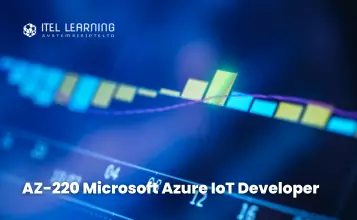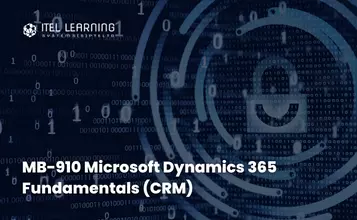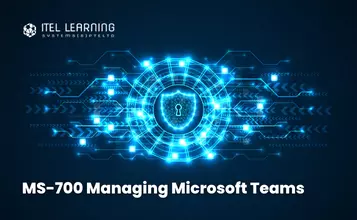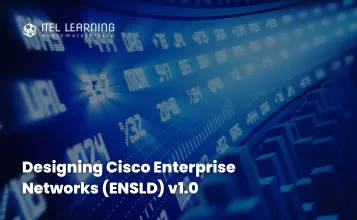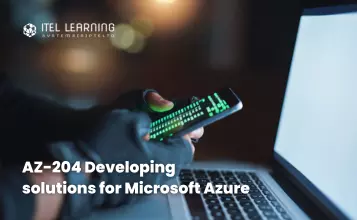Overview
This course provides students with the skills and knowledge required to successfully create and maintain the cloud and edge portions of an Azure IoT solution. The course includes full coverage of the core Azure IoT services such as IoT Hub, Device Provisioning Services, Azure Stream Analytics, Time Series Insights, and more. In addition to the focus on Azure PaaS services, the course includes sections on IoT Edge, device management, monitoring and troubleshooting, security concerns, Azure Digital Twins, and Azure IoT Central.
Prerequisites
To be successful in this course, learners should have the following:
- Cloud Solution Awareness: Students should have experience using the Azure Portal and a basic understanding of PaaS, SaaS, and IaaS implementations.
- Software Development Experience: Software development experience is a prerequisite for this course, but no specific software language is required, and the experience does not need to be at a professional level.
- Data Processing Experience: General understanding of data storage and data processing is a recommended but not required
Course Duration
4 Days
Course Outline
- Examine subsystems of an IoT architecture
- Examine data flow and processing
- Examine cross-cutting architectural needs
- Examine IoT hardware components
- Review the Azure IoT technologies
- Review the IoT device software options
- Examine cloud service components of an IoT solution
- Examine the Azure portal
- Customize the Azure portal UI
- Examine features of Azure IoT Hub
- Examine features of Azure IoT Hub Device Provisioning Service
- Examine Azure resource name requirements
- Create Azure IoT resources
- Examine IoT Hub tiers
- Examine IoT Hub endpoints
- Examine IoT Hub security concepts
- Examine IoT device lifecycle terms and concepts
- Review the Azure IoT device types
- Examine device identity and registration
- Get started with device twins
- Get started with device monitoring
- Examine device retirements
- Review the IoT developer coding-tool options
- Review the Azure IoT Hub SDKs
- Examine the Azure IoT Hub Device SDKs
- Examine the Azure IoT Hub Service SDKs
- Review the Visual Studio Code extensions
- Get started with Azure CLI tools
- Examine the Azure CLI support for IoT Hub
- Get started with the Azure Cloud Shell
- Review device communication types
- Examine the communication protocols
- Review IoT Hub device streams
- Examine device-side code implementation
- Implement device-to-cloud communication
- Get started with devices and device provisioning
- Examine features of the Device Provisioning Service
- Examine Device Provisioning Service concepts
- Examine device enrollment concepts
- Review the enrollment types
- Get started with X.509 certificate attestation
- Get started with TPM attestation
- Get started with symmetric key attestation
- Examine the device provisioning process
- Examine the auto-provisioning process
- Examine the reprovisioning process
- Examine Azure CLI support for device provisioning
- Examine the Device Provisioning Service SDKs
- Examine how to control access to DPS
- Review the device enrollment processes and tools
- Examine how to configure verified CA certificates
- Examine how to roll device certificates
- Examine the deprovisioning process
- Examine how to manage disenrollment
- Examine how to provision for multitenancy
- Provision and deprovision devices using individual enrollments
- Provision and deprovision devices using group enrollments
- Review message processing concepts
- Examine the common message format
- Examine message routing
- Examine the IoT Hub built-in endpoint
- Examine routing to multiple endpoints
- Examine the message routing query syntax
- Compare IoT Hub message routing with Event Grid integration
- Examine message enrichments for D2C messages
- Examine IoT Hub quotas and throttling
- Get started with Azure Stream Analytics
- Examine Azure Stream Analytics use cases
- Review ASA patterns and guidelines
- Get started with ASA input types
- Examine ASA streaming data input
- Examine ASA reference data input
- Examine the ASA query syntax
- Parse complex data types with ASA queries
- Examine time handling considerations for ASA queries
- Examine the ASA windowing functions
- Examine ASA output options
- Examine features and characteristics of Azure Functions
- Implement message routing and Azure Stream Analytics
- Review the contributing roles for business integration
- Review the Azure services for downstream messaging
- Examine business integration with Event Grid
- Examine using Event Grid to react to IoT Hub events
- Examine the choice between IoT Hub routing and Event Grid integration
- Get started with Azure Logic Apps
- Examine the use cases for Time Series Insights
- Examine the benefits provided by Time Series Insights
- Examine TSI resource configuration
- Examine TSI integration with IoT Hub
- Review Power BI options and capabilities
- Examine the Power BI data connections
- Examine data visualizations options in Power BI
- Integrate Azure Event Grid IoT Hub
- Analyze time stamped data with Time Series Insights
- Examine features and capabilities of Azure IoT Edge
- Examine the IoT Edge runtime
- Introduction to Azure IoT Edge modules
- Examine the module twin properties of the IoT Edge runtime modules
- Examine the IoT Edge security manager
- Examine IoT Edge deployment concepts
- Examine the IoT Edge deployment manifest
- Examine pre-deployment considerations
- Review the IoT Edge device gateway patterns
- Examine downstream device authentication
- Examine a transparent gateway configuration scenario
- Deploy a module to an IoT Edge device
- Configure an IoT gateway device
- Get started with IoT Edge runtime environment programming
- Examine IoT Edge runtime supported systems
- Examine module development and test tools
- Examine the VS Code development environment
- Examine the module development process
- Examine the module debugging process
- Examine extended offline capabilities
- Examine Azure Blob Storage on IoT Edge
- Examine module access to local storage
- Develop and deploy a custom IoT module
- Configure an IoT Edge gateway for offline support
- Review device management concepts
- Examine the device management patterns
- Examine device configuration using device twins
- Examine device management using direct methods
- Choose between device management approaches
- Review the device management tools and approaches
- Examine device management using the IoT extension for Azure CLI
- Examine device management using the Azure IoT tools for VS Code
- Examine how to use IoT Hub jobs for device management
- Examine IoT Hub automatic device management
- Examine automatic device management using Azure CLI
- Examine device configuration best practices
- Manage devices using devices twins and direct methods
- Implement automatic device management
- Examine Azure Monitor support
- Examine IoT Hub metrics
- Examine resource log contents and monitoring
- Examine device connection state and lifecycle notifications
- Review IoT Hub service limits
- Examine device connection best practices
- Examine the device communications troubleshooting guide
- Configure IoT Hub monitoring
- Review security recommendations
- Examine IoT security infrastructure from the ground up
- Examine a security-in-depth strategy
- Examine threat modeling and mitigation techniques
- Review Microsoft Defender for Cloud concepts
- Examine Microsoft Defender for IoT features and requirements
- Examine the features of an agent-based Microsoft Defender for IoT implementation
- Examine the built-in features of Microsoft Defender for IoT
- Examine the built-in security alerts
- Examine custom alert implementation
- Examine Microsoft Defender for IoT security agent options
- Examine security agent authentication methods
- Examine built-in security agent alerts
- Review the Microsoft Defender for IoT security recommendations
- Review device security baseline recommendations
- Implement Microsoft Defender for IoT
- Review the Azure Digital Twins environment and services goals
- Examine the services and data workflows that form an Azure Digital Twins solution
- Get started with Azure Digital Twins models
- Examine the Digital Twins Definition Language
- Examine digital twins and graph construction
- Review the tools used to develop an Azure Digital Twins solution
- Examine Azure Digital Twins service configuration
- Get started with model management
- Examine the Azure Digital Twins application programming interfaces and Postman
- Get started with Azure CLI for Azure Digital Twins
- Examine the Azure Digital Twins SDKs
- Manage digital twins in the graph
- Manage digital twin relationships in the graph
- Get started with Azure Digital Twins queries
- Get started with Azure Functions for Azure Digital Twins
- Examine Azure Digital Twins event data
- Examine data ingress and egress processes
- Examine the Azure Digital Twins metrics
- Examine the Azure Digital Twins diagnostic settings
- View and query the Azure Digital Twins diagnostic logs
- Examine Azure Digital Twins alerts
- Review Azure Resource Health support for Azure Digital Twins
- Implement Azure Digital Twins
- Review the capabilities of Azure IoT Central
- Examine the components of an Azure IoT Central app
- Review the Azure IoT Central application template options
- Examine Azure IoT Central device authentication options
- Review Device Template capabilities
- Examine the Device Model section of a Device Template
- Examine the Cloud Properties section of a Device Template
- Examine the Customizations section of a Device Template
- Examine the Views section of a Device Template
- Version a Device Template
- Review the Azure IoT Central UI tools for device management
- Implement device management using device groups
- Manage devices at scale using jobs
- Examine the configuration of rules in Azure IoT Central
- Examine how to configure a rule with condition-based actions
- Examine the Azure IoT Central dashboard page for administrators
- Examine the Azure IoT Central data analytics UI
